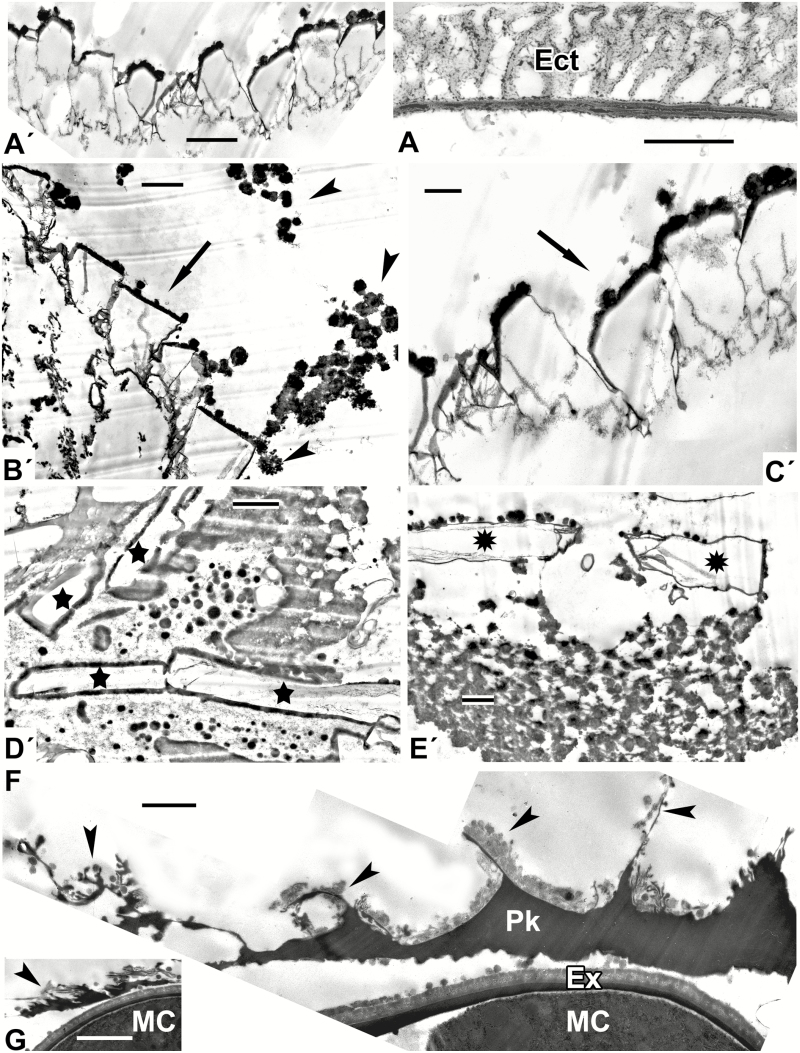Fig. 6.
Fractal (self-similar) patterns, self-assembling in experiments (A′–E′) and in nature (F, G). (A′) One of the fractal structures, simulating the alveolate pattern of the exine in Lepidozamia sp. (A). (B′, C′) Two sequences of fractal units (arrows), surrounded by spherical micelles (arrowheads). (D′, E′) Another type of fractal unit, resembling bricks (D′, stars) and flags (E′, asterisks). (F, G) Pollenkitt deposition inside the anther loculus in Symphytum officinale, located around microspores, with complex branching structures on the surface; typical fractal structures (arrowheads). (Parts of Fig. 11c in Gabarayeva et al., 2011b). Scale bars = 1 µm. Ect, ectexine; Ex, exine; G, glycocalyx; MC, microspore cytoplasm; Pk, pollenkitt.

